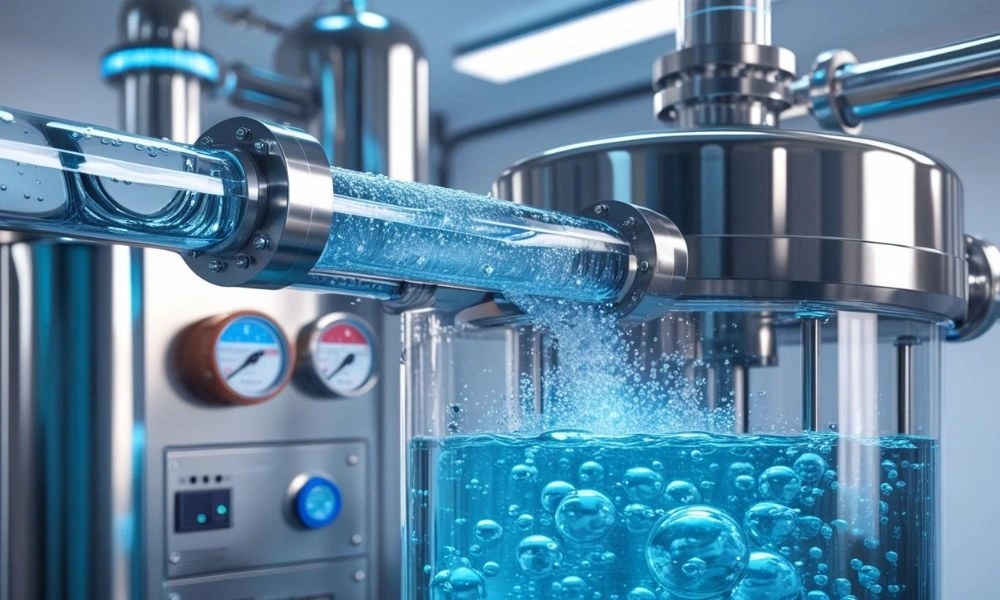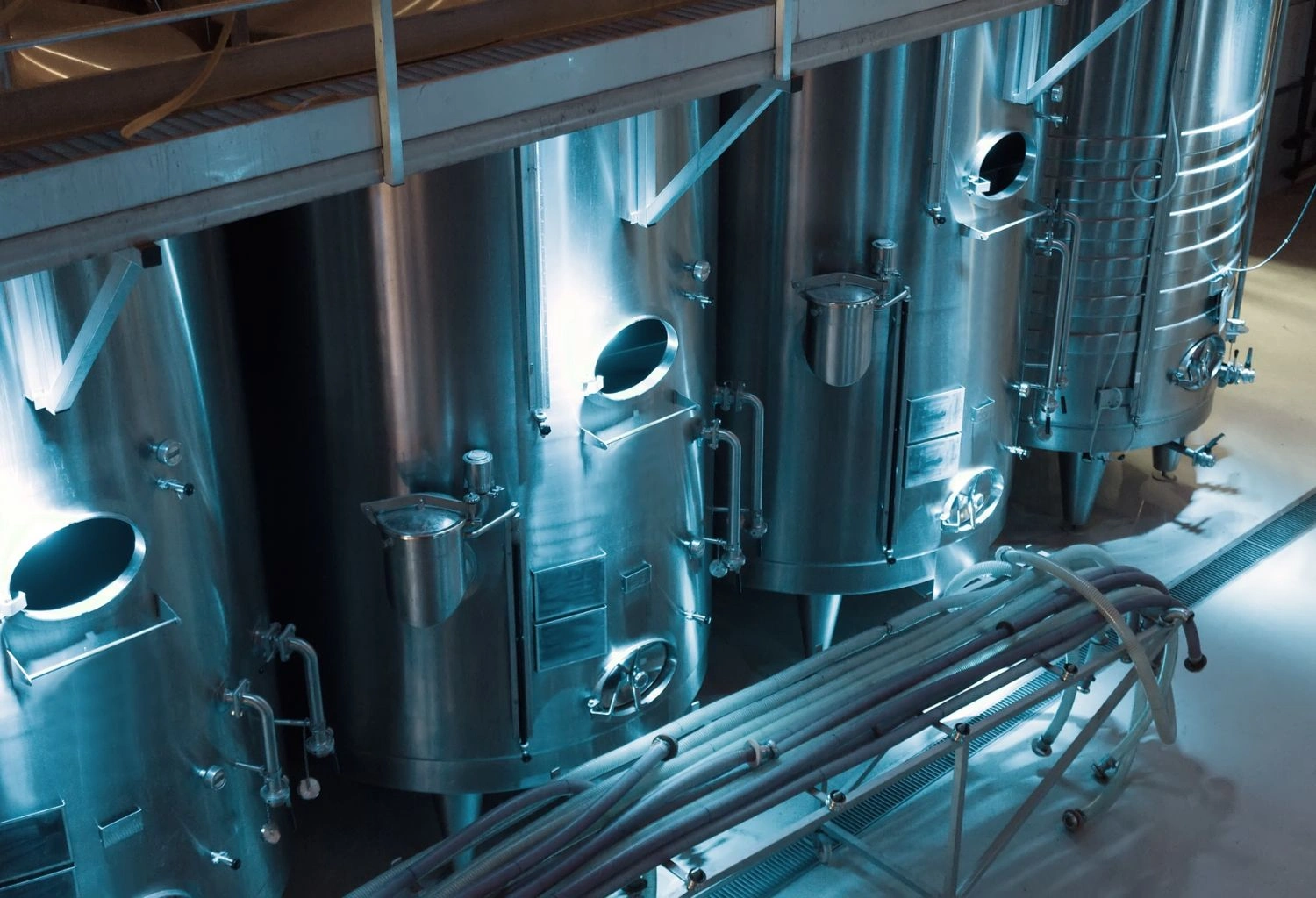Ozone generators provide a powerful, chemical-free method for water treatment, removing bacteria, viruses, and metals. WCSP integrates ozone technology into Pakistan’s municipal and industrial systems for clean, safe, and sustainable water. From drinking water plants to wastewater recycling, WCSP ensures reliable performance and compliance using advanced ozone-based solutions.
Chlorination System
How does an ozone generator purify water?
Clean and safe water is fundamental to human health and industrial efficiency. With the increasing water pollution, effective water treatment technologies are also in higher demand. One of the most notable technologies is ozone water treatment. But how can an ozone generator purify water, and why is it among the most potent water purification systems currently available?
This blog will delve into the science, mechanism, benefits, and real application of ozone generators in water treatment—particularly how Water Care Services Pakistan (WCSP) implements it within industrial and municipal applications.
What Is Ozone and Why Is It So Potent?
Ozone (O₃) is a three-atom oxygen gas. It’s a naturally occurring, very reactive molecule that degrades pollutants rapidly. When applied to water treatment, ozone functions as a powerful oxidizer that kills:
- Bacteria
- Viruses
- Fungi
- Algae
Iron, manganese, and other dissolved impurities
How Does an Ozone Generator Function?
An ozone generator operates by converting oxygen (O₂) into ozone (O₃) with two primary methods:
Corona Discharge Method
A high-voltage electric discharge dissociates oxygen molecules into individual atoms. These recombine as ozone (O₃). The process is frequently employed by industrial-scale treatment systems.
Ultraviolet (UV) Radiation Method
A particular wavelength of UV light dissociates oxygen molecules so that ozone can form. This technique is more prevalent for small-scale or domestic applications.
Once ozone is produced, it’s injected into water with the aid of diffusers or venturi injectors, and it reacts immediately with impurities.
Stages of Ozone Water Treatment:
Oxygen Feed
Pure oxygen is employed to optimize ozone production.
Ozone Generation
Oxygen is fed through the generator where ozone is generated.
Ozone Injection
Ozone gas is injected into water with an injector or diffuser.
Contact Time
Water is stored in a tank to permit ozone to react and oxidize impurities.
Degassing
Excess ozone is destroyed in off-gas destructors to avoid emission into the atmosphere.
Advantages of Utilizing an Ozone Generator for Wastewater Treatment
- Chemical-Free Disinfection – Chlorine and other additives not required.
- Eliminates Odor and Taste – Organic compounds causing bad smell or taste are decomposed by ozone.
- Destroys Bacteria and Viruses – More effective than chlorine and UV against more pathogen types.
- Oxidizes Metals – Transforms iron, manganese, and sulfur into solid particles for simple filtration.
- Eco-Friendly – Ozone breaks back into oxygen without any toxic residue.
Typical Uses of Ozone Water Treatment in Pakistan
Drinking Water Plants
Municipal authorities utilize ozone for river or groundwater treatment.
Bottled Water Industry
Guarantees microbiologically safe bottled water.
Wastewater Recycling
Oxidizes toxic compounds prior to safe discharge or reuse.
Textile and Pharmaceutical Industries
Destroys color, chemical residue, and biological impurities from wastewater.
WCSP’s Contribution to Ozone Generator Work and Integration
Water Care Services Pakistan (WCSP) is a renowned water and wastewater management name. Their contribution to ozone generator work entails:
- Installation of ozone systems as per site-specific needs
- Employment of internationally certified ozone equipment
- Offering regular AMC (Annual Maintenance Contracts)
- Combining ozone treatment with MBBR, AOP, and electrocoagulation systems
Whether it’s a huge industrial plant or a small town, WCSP engineers deliver customized ozone generator solutions that are reliable, efficient, and NEQS compliant.
Safety Precautions for Using Ozone
- Have controlled contact time and concentration.
- Always utilize off-gas destructors to destroy excess ozone safely.
- Use ozone sensors to detect gas leaks.
- Operator training is essential for safe plant operation.
Water Treatment
Is Work of Ozone Generator Cost-Effective?
Yes. Even though the startup is more expensive than chlorine, the chemical usage savings, health safety, and lower environmental fines over time make ozone an economical option.
- Drawbacks of Ozone Water Treatment
- High installation cost
- Not suited for long-term residual disinfection
- Power backup systems and technical skills required
These drawbacks can be mitigated, however, with the expert design and support systems of WCSP.
Conclusion
Ozone generator technology is the foundation of contemporary water treatment. It provides unmatched disinfection, strips out toxic metals, and doesn’t produce chemical byproducts. Ozone systems from WCSP are applied throughout Pakistan in industries, municipalities, and commercial developments. If you’re looking for sophisticated water purification to meet international standards and Pakistan’s local requirements, ozone is the intelligent, eco-friendly choice.
Frequently Asked Questions (FAQs)
1. What is ozone and how does it help in water treatment?
Ozone is a strong oxidant that kills bacteria, viruses, and removes metals, offering chemical-free, eco-friendly water purification.
2. How does an ozone generator work?
It converts oxygen (O₂) into ozone (O₃) using corona discharge or UV light, then injects ozone into water for disinfection.
3. Is ozone treatment better than chlorine?
Yes, ozone is more effective in killing pathogens and leaves no harmful residue, unlike chlorine.
4. What are the stages of ozone water treatment?
Stages include oxygen feed, ozone generation, injection, contact time for reaction, and degassing excess ozone safely.
5. Where is ozone water treatment used in Pakistan?
It’s used in drinking water plants, bottled water, wastewater recycling, and industries like textiles and pharmaceuticals.
6. How does WCSP implement ozone technology?
WCSP designs and installs customized ozone systems, integrates them with other technologies, and provides regular maintenance and support.
7. Is ozone treatment safe?
Yes, with safety measures like gas sensors, destructors for excess ozone, and trained operators, it’s very safe.
8. What are the benefits of ozone over UV or chemicals?
Ozone works faster, kills more pathogens, removes odors and metals, and breaks down into oxygen naturally.
9. Is ozone water treatment cost-effective long term?
Despite higher startup costs, ozone saves money over time by reducing chemical use, ensuring safety, and avoiding fines.
10. Are there any disadvantages of using ozone generators?
Yes, high setup cost and technical needs, but WCSP’s expert systems help mitigate these issues effectively.



